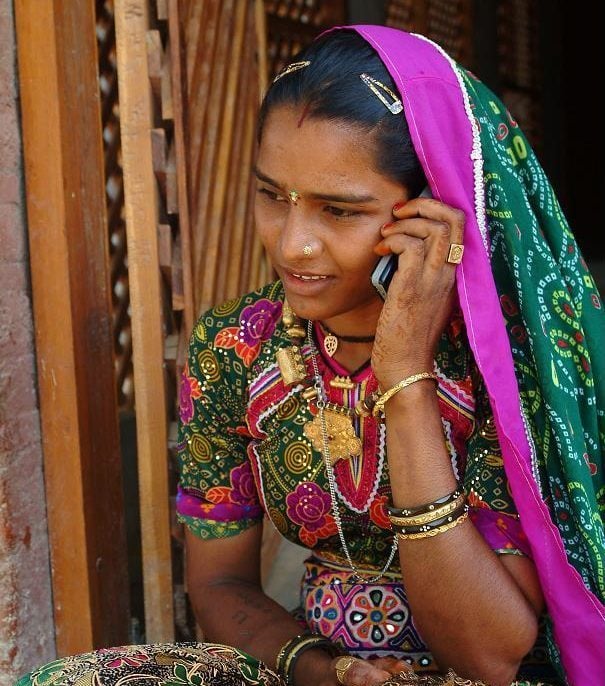Find out the week’s top mobile stories from around the world.
This week.. Trump threatens net neutrality, mobile ad targeting improves, Chinese smartphone vendors invest in India, the used smartphone market is booming, iPhone owners tend to be more superficial than Android owners and much more.

Trump’s FCC transition team may spell the end of net neutrality
Recode
President-elect Trump formally named two advisers to help oversee his telecom policy agenda at the Federal Communications Commission today: Jeff Eisenach and Mark Jamison.
Both are fierce opponents of the network neutrality rules the agency passed last year and have long advocated against regulations aimed at reining in the already massively consolidated telecom industry, where most Americans have no more than one or two choices for broadband providers as it is.
A record-breaking four million Americans commented in the FCC proceedings in favor of passing net neutrality, which now prevents internet providers, like Comcast and Verizon, from charging websites, like Netflix and Facebook, a fee to access users at faster speeds.
Read more…
What’s real news, what’s an ad? Students can’t tell, study shows
CNET
If you need lessons on how to dominate Snapchat, you might turn to the young people in your life. But don’t look to them to tell you what’s real and what’s not online, a Stanford study released this week shows.
Students have trouble telling the difference between news stories and native ads (aka sponsored content), for example, and figuring out where the information came from in the first place, researchers found. More than 80 percent of students thought an ad labeled “sponsored content” was a news story.
“Overall, young people’s ability to reason about the information on the Internet can be summed up in one word: bleak,” researchers at the Stanford Graduate School of Education wrote.
Read more…
85% mobile subscription penetration in Sub-Saharan Africa
ITWeb Africa
A market dominated by youth, more affordable smartphones, growth in cellular Internet of Things (IoT) connections is driving the growth in mobile subscription penetration rates (in reference to all connected mobile devices) in Sub-Saharan Africa.
This is according to the Ericsson 2016 Global Mobility Reportannounced at this year’s AfricaCom hosted in Cape Town.
Research by the firm suggests that there were 84 million new mobile subscriptions globally in Q3 2016, with 15m added in Africa. By the end of 2016, there will be 3.9 billion smartphone subscriptions globally.
The continent has a subscription penetration (percent of population) of 82%, but this figure is expected to reach 100% by 2021 and 105% by 2022, with over 1 billion mobile subscriptions.
Read more…
Used smartphone market to explode by 2020
CBR
The used smartphone market will almost triple by 2020 as trade-in programmes go global, according to market watcher International Data Corporation (IDC).
The research firm expects the global market for used smartphones to grow at a 22.3% CAGR, increasing from 81.3 million in 2015 to 222.6 million units to 2020.
By 2020, the used smartphone market is expected to worth about $30bn, with an average selling price of $136.
Major carriers, retailers, and various online retailers (e-tailers) in the US have implemented some type of trade-in strategy or platform to purchase used devices at a deep discount, IDC said.
Read more…
US regulators seek to reduce road deaths with smartphone ‘driving mode’
The Guardian
US regulators are seeking to reduce smartphone-related vehicle deaths with a new driving-safe mode that would block or modify apps to prevent them being a distraction while on the road.
The US National Highway Traffic Safety Administration (NHTSA) are to issue voluntary guidelines for smartphone makers, which will seek to restrict the apps and services accessible on a smartphone being used by a driver.
US transport secretary Anthony Foxx told the New York Times: “Your smartphone becomes so many different things that it’s not just a communication device. Distraction is still a problem. Too many people are dying and being injured on our roadways.”
Read more…
Mobile to take lead role in US retail’s holiday season
FT
Mobile will overtake desktop in online traffic to retail websites and apps for the first time in the US this holiday season, taking a 53 per cent share of visits, with Black Friday this week providing a key indication of consumer demand.
But companies and consumers are not always finding the shift to mobile easy. Using devices such as smartphones can be frustrating when filling in forms, adding goods to baskets or checking a product. As a result, mobile traffic is not being converted into revenues at the same pace — just 34 per cent of sales in the final two months of the year are expected to be made through mobiles, according to Adobe Digital Insights.
“Mobile interactions will make or break retailers’ online revenue this holiday season,” said Tamara Gaffney, principal analyst at Adobe, which measures 80 per cent of all online transactions from the biggest 100 US retailers.
Read more…
Chinese smartphone vendors investing in India
China.org.cn
Chinese smartphone vendors are stepping up investments in India in a move to establish a beachhead in the world’s fastest-growing smartphone arena, as the intensified competition and a saturated home market push them to look for overseas opportunities.
Huawei Technologies Co Ltd, the world’s third largest smartphone maker, said it has started assembling smartphones in India by partnering with local manufacturer Flex India.
The move came after Gionee Communications Equipment Co Ltd said in September that it would pour in 495 million yuan ($73.8 million) to build factories in the world’s second most populous country.
Read more…
Accuracy of Mobile Ad Targeting Improving – 60 Per Cent of Ads On Target in Q2
Mobile Marketing Magazine
60 per cent of targeted ad impressions on mobile were delivered to the correct audience during Q2 2016, according to a report from Nielsen. The accuracy of mobile ad targeting is on the rise – in Q1 2015, 49 per cent were delivered on-target.
This improvement puts the channel neck-and-neck with desktop, also averaging 60 per cent, but mobile fared consistently better when it came to targeting more narrow groups.
When targeting 16-30 year olds, for example, 61 per cent of mobile ads were delivered on-target, beating desktop’s 50 per cent. When gender is added to the targeting mix, mobile achieved 48 per cent compared to just 35 per cent on desktop.
Read more…
Study: iPhone owners tend to be more superficial than Android users
The Next Web
It turns out that your phone could be an indication of your character. A new studyfrom the University of Lincoln and the University of Lancaster in the UK suggests that iPhone owners are more dishonest than Android users.
To reach this conclusion, the researchers interviewed 530 people throughout 2015 and 2016, asking them a series of questions about their phones and their feelings.
Once the researchers collected and crunched all the data, their findings indicated there are noticeable differences in the personal qualities iPhone and Android users exhibit.
Read more…
India 4G tablet market grows 55 percent in Q3 2016, says IDC
Telecom Lead
Tablet shipments in India reached 1.06 million in Q3 2016, showing flat growth over the same period last year and growing 7.8 percent over Q2 2016.
4G tablet shipments rose 55 percent in Q3 2016 over previous quarter. 4G tablets account for almost one-fourth of total tablet shipments in Q3 2016 against 15.3 percent in the first quarter of this year.
Samsung dominates the 4G tablets category with its J max. iBall leads the shipments of 4G tablets amongst the Indian vendors.
Telecom network operators such as Bharti Airtel, Idea Cellular, Vodafone India, Telenor, Reliance Communications and Reliance Jio are in the process of expanding their 4G networks across the country to gain from the mobile data boom.














